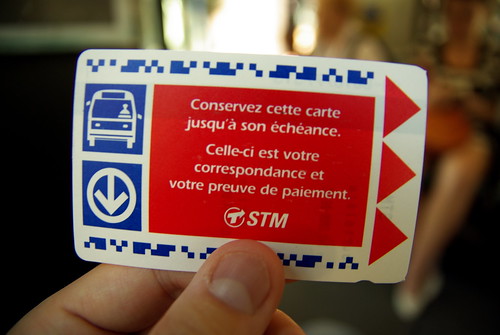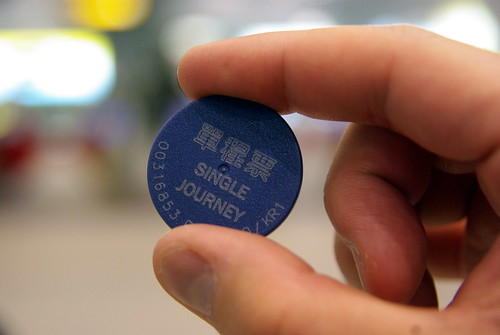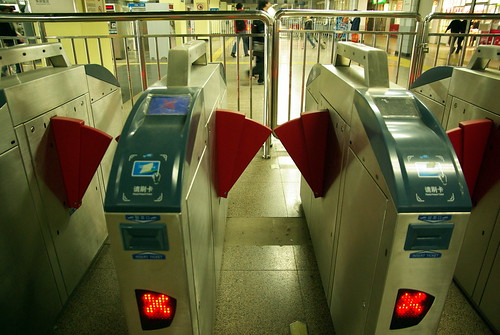The STM is slowly rolling out new transit cards that will replace the CAM and bus/metro transfer tickets in the course of the year to follow. I have not been taking the bus very often because bike season is open. Today, I boarded the 80, and was surprised to find that my old bus ticket was exchanged for one of the brand new transfer / single-journey and six-journey cards.
During a brief stop in the city of Kaohsiung, the second largest metropolis on the island of Taiwan, I took their brand-new Mass Rapid Transit less than a month fresh off its inauguration on March 9th, 2008.
Kaohsiung chose the token for single journeys, similarly to another underground train system that I used, the MTR-built Shenzhen Metro. The first obvious advantage is that the token is reusable, whereas I have to throw away my piece (or would have to, once the novelty factor passes) of transfer/ticket once I exit a Montreal metro station or get off from a STM bus.
Montreal is not the only city in the world rolling out a new way of issuing public transit tickets. The Beijing Subway, which is also inaugurating two new lines before the end of June, introduced its new ticketing system earlier this week. When I visited Beijing last April, all the machines were in place, but still in the process of being checked by the diligent Beijing Subway staff. In the meanwhile, one or two ladies would sit before the stairs to the platform, near the disabled electronic gates that will be replacing them two months from then, and check paper tickets or whether you “beeped” appropriately with your Yikatong (一卡通), Beijing’s store-value contactless smart card.
Until the Fall 2007, boarding the subway would usually cost you 3 to 5 yuans (50 to 85 Canadian cents) per trip, depending on the lines that you would take. Now, it is a 2 yuan flat rate, which, according to my expatriate friends, accounts for the considerable increase in use of the subway system in the past half-year. Also known as the “ICC”, Beijing’s transit card can also be used for more complex transactions on public buses.



